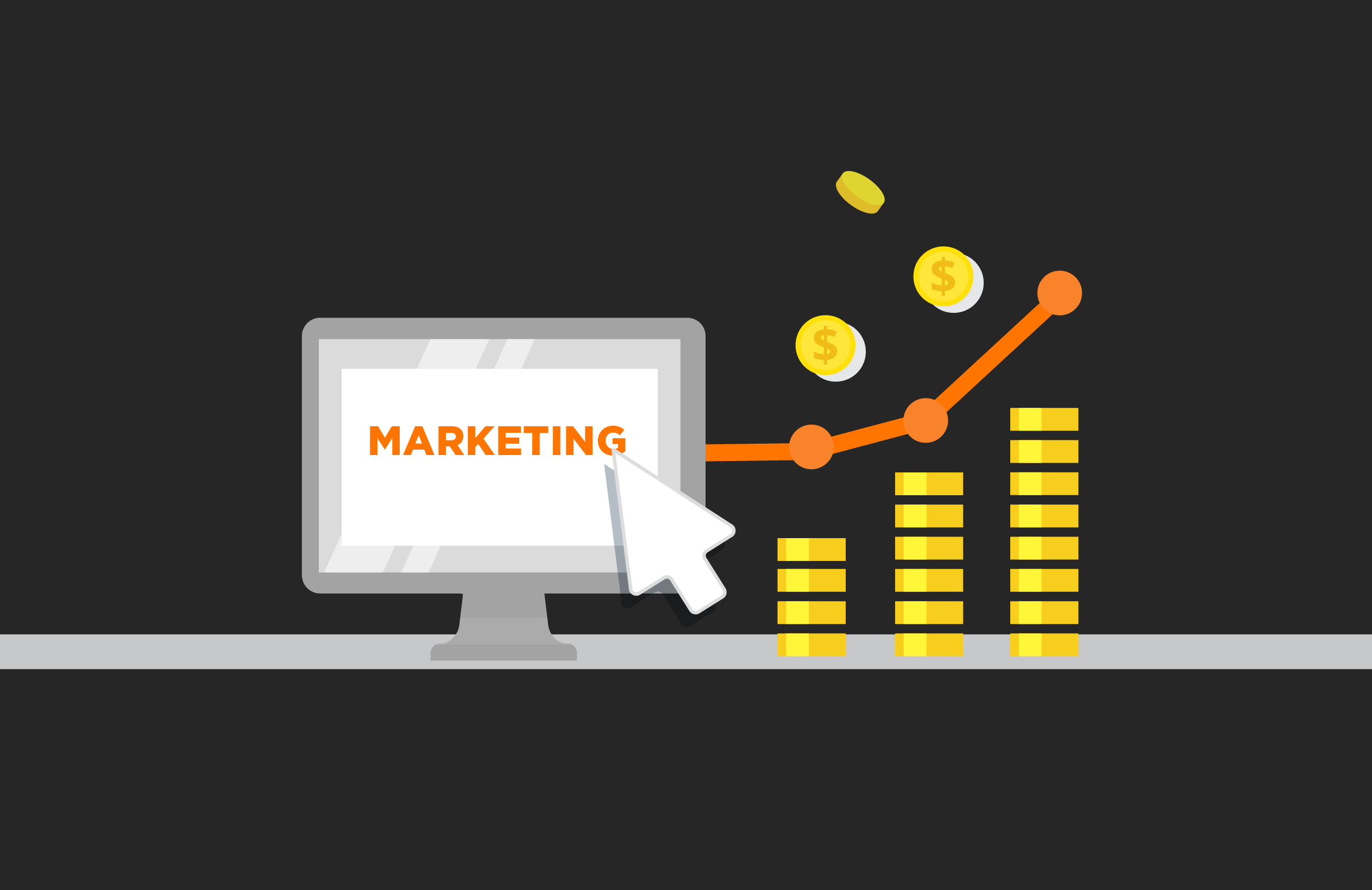
You’ve heard the story before – Sales-minded people push back on marketing because it has no clear influence on revenue. The impact of fluffy content, social media posts, and Google ads is hard to track, leading to inefficient strategy and wasted dollars. But what if you knew that there is, in fact, an ROI on marketing efforts?
The Case of Concept: How Our President Became a Believer
Up until about a year ago, Concept didn’t use marketing as a tool to drive revenue. There wasn’t a point. Why spend money in an area with no clear return on investment? Sales and closed deals were a good enough place to track efforts. But as you and many people know, these parts of a business are not mutually exclusive. Marketing and sales must work together to effectively drive revenue and increase ROI.
After implementing some of the strategies below, the return on investment became clear and the company decided it was time to give marketing a chance.
Start at Pay Per Click Advertising
The first venture was pay per click advertising. Customers were obviously turning to Google looking for companies like Concept. Posting ads that would show up in search results and attract these customers would garner traffic, but it wasn’t clear if the number of clicks would correlate to sales numbers. You probably feel the same, right?
If this sounds like you, there’s an easy solution where you can market through PPC and see the results. By simply installing a conversion tag (i.e. a “snippet” of code Google provides right through your Ads account) in the basic code of your website, you’re able to detect exactly which leads were generated from paid search marketing. By tracking these leads as they move through the sales pipeline, you can identify which closed deals started as PPC clicks, thus justifying continuing to invest in digital marketing efforts.
Beef Up Visibility into Your Online Presence with an Optimized Website
In the case of Concept, the more successful the PPC campaign became, the more important it was to optimize the company’s website. We realized our PPC was paying off but our organic search left something to be desired. If the bosses who determine spend still think content is fluffy and unnecessary, the best way to prove them wrong is by using Google’s Keyword Planner tool to determine the best keywords and content to get your message out. After optimization of the Concept website, qualified leads started pouring in the next day.
Using the Google Analytics platform (accessible through another “snippet” Google provides) Concept was able to determine that the strategic content used on the website was more than just “fluff” and actually generated qualified leads. Organic search is great because with a few simple tweaks and maybe some revamping of content, your site will appear at the top of Google search results without you having to pay for advertising. Rankings and traffic on your website show up in real time through software, giving you insight into just how many people see this optimized content and decide to engage with it. This puts your leads that come from organic search into their own category where you can track their ROI.
Influence Through Email Marketing and Marketing Automation Software
Marketing efforts shouldn’t lose speed after they’ve brought more traffic to your website and given you some contact info. After Concept noticed increased visibility through SEO content and pay per click advertising, it was time to find a way to follow up with the leads that came from web traffic. Engaging with these people to keep the Concept name in front of them was essential.
If you’re at this point, you’ve probably already realized that there is revenue tied to marketing but you’re still unsure how to measure it. Your dollars have been spent and the number and quality of your leads are increasing. The next step should include marketing automation. Using software like Hubspot or Pardot lets you connect with all of your leads in one place, creating a greater influence on potential buyers. This software also tracks engagement with emails, so you can see just how effective one of these campaigns is at getting customers connected with your sales reps.
Track ROI with CRM Software
At the end of the day, software that lets you track your marketing efforts is essential for measuring ROI. By creating campaigns in Salesforce that assign titles to leads at each point in the sales pipeline, Concept can see just exactly where leads are coming from and follow their entire marketing engagement journey until the deal is closed.
Visibility into which prospects and deals were generated through marketing not only provides insight into your ROI but also shows you where to focus your efforts if leads are lacking. Teams can also use Salesforce to manage their projects and timecards, letting you effectively quote clients for marketing work.
The Bottom Line
It’s easy for B2B companies to overlook marketing because its influence isn’t always so clear. When reviewing budgets, it’s not uncommon to focus most of your money into areas where revenue is easily measured. However, once you implement the right tools, marketing can bring a significant ROI for your company.
By using methods like pay per click advertising, content writing, SEO development, marketing automation, and CRM software, Concept has been able to establish effective marketing and track its ROI both internally and for clients. If you’re still skeptical about if marketing can bring in revenue, start the conversation with Concept to see how this service can positively affect your business.
Share to your:
Partner With Concept
Share your details and our team will reach out to discuss collaboration opportunities

